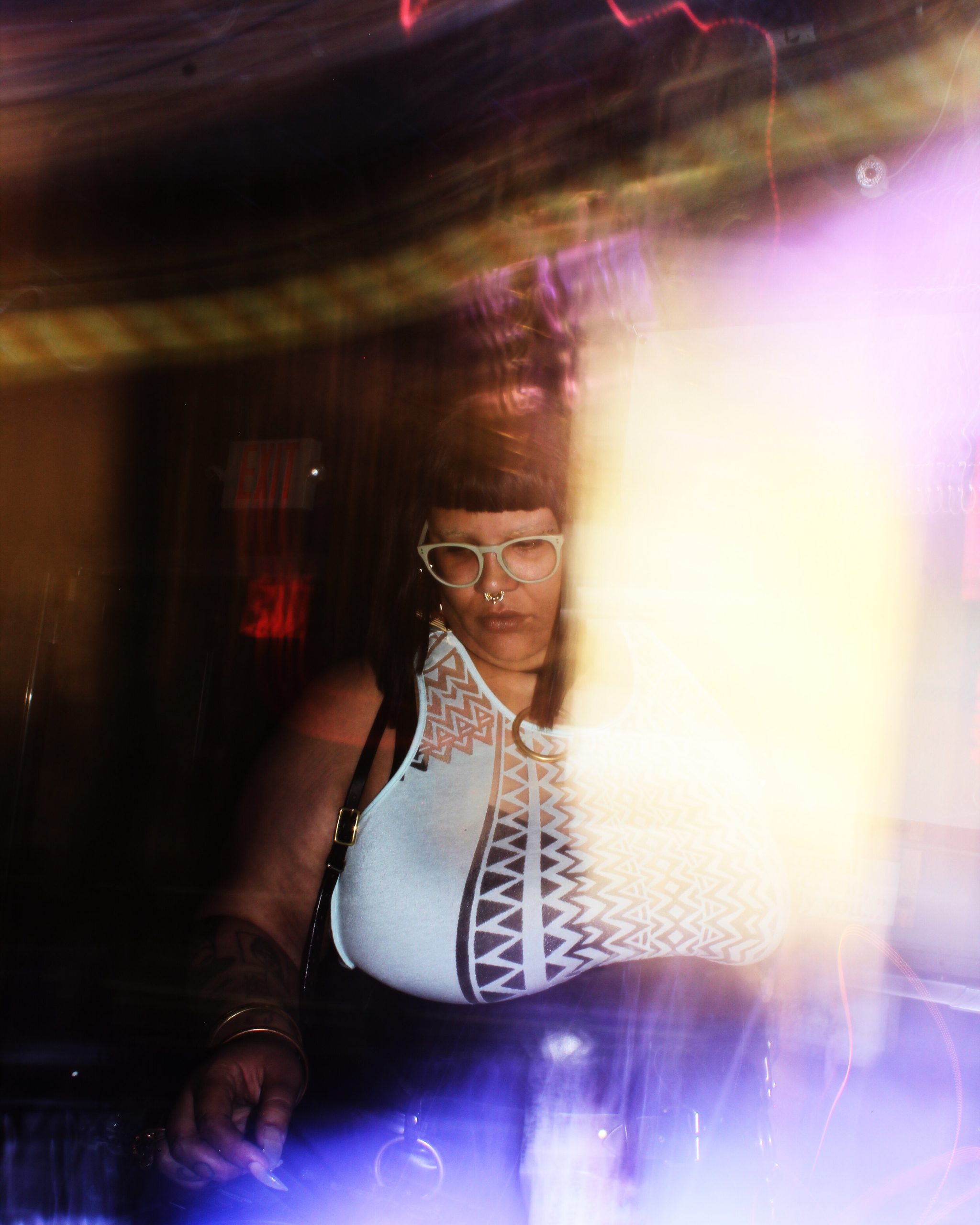
MOOGFEST: NIGHT ONE
Thursday, Apr. 25, 2019
Various venues, downtown Durham
Yesterday, someone said to me, “You survived Moogfest!” “Are you sure?” I replied, 80 percent joking and 20 percent legit wanting to know.
While we’re doing the math: Even after a full day of rest, my body is at 60 percent (the wages of three days of Dancing While Old), my voice is at 70 percent (my ears are impervious, but shouting over synths takes its toll), and my relief at ceasing to tweet for the INDY every five minutes is at all the percents.
Battered but satiated, with house beats, tone clouds, and disorienting lights still pulsing in my head, it’s time to start sorting through the blur of how the festival—in its fourth year in Durham, after absconding from Asheville, home of the late analog-synthesis pioneer Robert Moog—fared in 2019, under the ownership of Gillian Ryan’s Q Level LLC instead of UG Strategies.
In our preview package last week, we took note of the ways in which the fifteen-year-old electronic-music festival seemed to be working on some things that the INDY and other locals have previously criticized it for: the lack of widely accessible free or low-cost access points to complement the esoteric main lineup and the minimal engagement with the rich electronic-music scene native to the city that approved a $60,000 public-funding request this year.
So we had to start Thursday evening at Quarter Horse, the basement arcade-bar where local deejay-and-party collectives Mamis & the Papis, The Conjure, and Party Illegal were playing for free. Basically, it was like a great Friday night in Durham, but time-warped to Thursday and pinned to a major music festival. True, six to nine was too early to reach Friday-night levels of inclusive debauchery, but by seven, the room was nicely filled out, with the ratio of dancing to stasis tilting in the right direction. It was a good look for Durham’s tireless dance-music workers and for the festival. I had to snap a stubborn strand of FOMO to disappear behind the paywall at The Armory, which, with The Carolina Theatre and The Pinhook, formed a tight triangle of Moogfest venues. (The Armory was essentially the dance space and the Carolina the auditorium space. The Pinhook always stays The Pinhook.)

The festival’s aesthetic is also three-pointed: You can sort all the bookings into beat music, experimental music, and pop music, but in strains that foreground rather than hide technology. Starting at 8:30 at The Armory, Matthew Dear and Kimbra epitomized the pop angle in back-to-back sets. Dear, who alternates between house-music producer and rakish electro-pop crooner, was fully in the latter mode. He’s an entertaining, extravagant performer, with a pomaded whiff of casino-circuit Daft Punk, and it was refreshing to be in a context where the electric guitar he played over sequencers and samplers seemed rarer than an ondes martenot. And New Zealand electronic-pop artist Kimbra—you know her from that Gotye song, if not from her well-received Primal Heart album last year—was a powerhouse singer with two digital touchscreens at her fingertips and two guys with heavily patched keyboards behind her. With her gracious, polished manner, expressive hand gestures, and occasional belting, it was like if Céline Dion had come out of Williamsburg in the aughties.
One distinguishing feature of the Moogfest experience is the stark, sometimes jarring contrast between consecutive sets; you keep settling into one vibe and then walking into a completely different one. This is just going to happen when you have a festival pitched to wizened analog-synthesis wizards, pop-ambient dabblers, and hedonistic party people alike. Thus did I leave a world of lush color and dynamic sound and descend into the stygian darkness of The Carolina, where William Basinski, the experimental tape-loop composer famed for his self-digesting The Disintegration Loops, was a silhouette in a low red haze.
Basinski’s personality combines two maverick archetypes, the native Texan and the downtown-era New York experimental composer, and he was briefly visible and voluble just before he started playing, informing us that what we were about to hear—his new album On Time Out of Time—was “about two fucking black holes that collided, and their vampiric destruction created a rift in space-time 1.3 billion years ago. It’s a love story. Get comfortable. It’s a little bumpy.”

Then the lights went out, and he began to process his tape loops, which include recordings of this ancient collision from powerful laser interferometers. This was one of my most anticipated bookings of the festival, and the microtonal fluctuation of long, gathering and dispersing drones was just what I expected. Sometimes, Moogfest’s jump cuts between the extremely physical and the extremely cerebral has a salutary effect, with each rejuvenating you for the other. But it can also be a Rorschach test for what kind of person you are, in that moment, if not in general—a listener or a mover? I stayed awhile as the darkness hummed and shrieked around me, started feeling antsy and wondering what my people were up to, and then went to The Fruit to dance. Given the stakes raised at the beginning of this write-up, it’s a check in the plus column that Moogfest’s first night felt, more than ever, like a good night out in Durham.
bhowe@indyweek.com
Friday and Saturday recaps to come, and look for more photos in Wednesday’s issue.
On April 30, this post was updated to clarify details of the festival’s ownership and funding.

